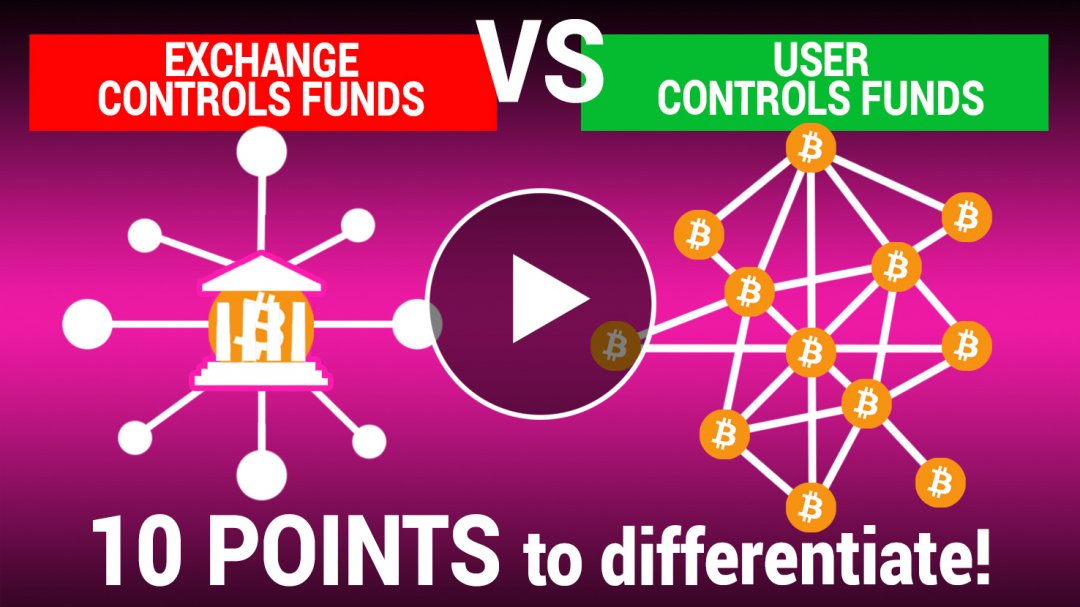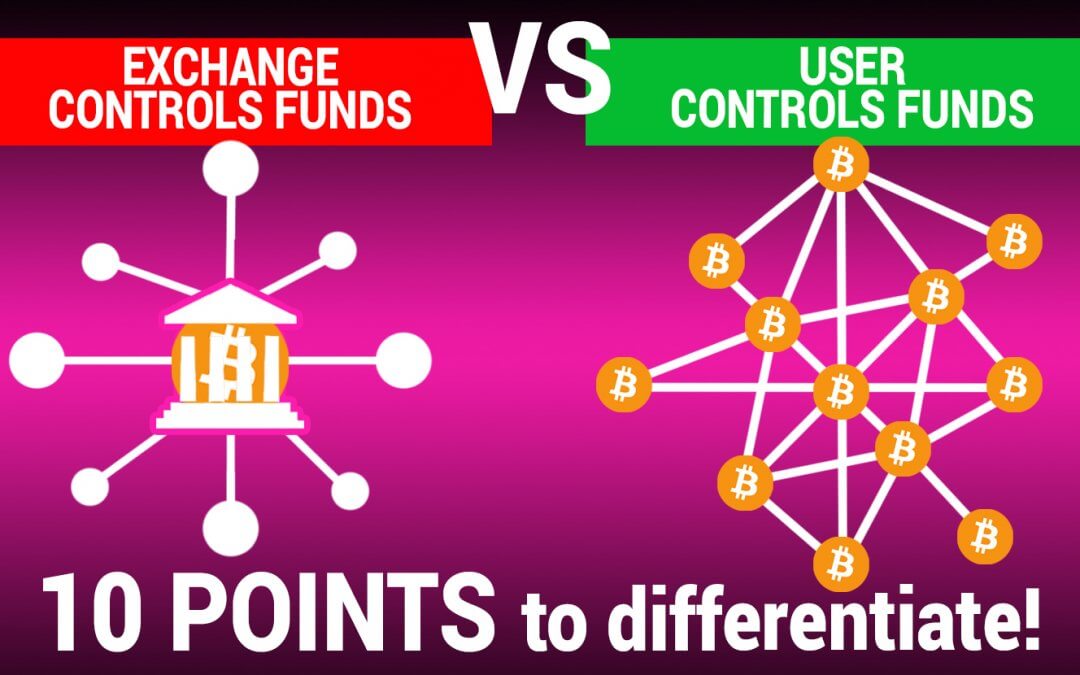The concept of decentralized Exchanges is becoming increasingly popular, and more and more funds are moving from centralized Exchanges (CEX) to the decentralized Exchanges (DEX).

But are the “decentralized exchanges” we see in the media really completely decentralized exchanges?
The truth lies, as so often, somewhere in between.
In this article 10 criteria how to evaluate a decentralized exchange objectively.
CEX, DEX or Non-Custodial?
As you will see from the 10 criteria, a distinction just between centralized and decentralized exchange is not sufficient.
There are many supposedly decentralized Exchanges, where you control your Private Key yourself – but many other important points of a real decentralized exchange are not given. I call such exchanges “Non-Custodial” Exchanges.
Let’s start with the 10 criteria:
1. Private Key
CEX: With a centralized Exchange, you never see a private key. The Exchange manages it – as well as all your stored money – for you.
Non-Custodial: With a non-custodial exchange, you remain in control of your private key. Your coins are in your control, but it’s also your responsibility to handle your private key carefully and keep it safe.
DEX: Here you also have full control over your private key and have to take care of it yourself.
2. Geoblocking
CEX: Just about every major exchange, including Binance, Coinbase, Kraken, etc., uses geoblocking. This simply has to do with the fact that they have to comply with regulations and rules of the countries where they are located.
Non-Custodial: There are Non-Custodial Exchanges that do not use Geoblocking, but most of the highly praised and popular ones like the “Binance DEX” do use Geoblocking.
DEX: Of course, a true decentralized exchange never uses any kind geoblocking at all.

3. Know-Your-Customer
CEX: Every serious central exchange requires that its customers go through a “Know your customer”, or KYC process. Again, this has simply to do with government regulations and rules.
Non-Custodial: The vast majority of Non-Custodial Exchanges require from their clients, if not a complete verification including identification etc., at least their email address, the creation of an account with password, etc.
DEX: With a real decentralized exchange, you don’t have to go through a KYC process or reveal any private information about yourself.
4. Infrastructure:
CEX: A website, a company, a central interface on which everything depends. If the website goes down or the company goes bankrupt, the exchange is no longer usable.
Non-Custodial: Even with non-custodial exchanges such as the large “Binance DEX”, there is often a central interface (website) on which everything depends.
DEX: With a true decentralized exchange there is no central interface at all. You have your own desktop app or can even use the Exchanges via terminal if necessary.

5. Code
CEX: Virtually every central exchange has a private code that is not publicly accessible.
Non-Custodial: There are Non-Custodial Exchanges that have a public code, but most are actually private.
DEX: Every real DEX of course has a completely open source code.
6. Order Matching
CEX: Order matching at each central exchange is of course centralized.
Non-Custodial: Again, order matching is mostly centralized.
DEX: Decentralized Exchanges work via so-called liquidity pools, which are completely decentralized. However, this method is also less efficient than centralized order matching.
7. Settlement
CEX: Settlement, which is of course closely linked to order matching, is also carried out centrally at a CEX.
Non-Custodial: As with order matching, settlement is also centralized for most non-custodial wallets.
DEX: Settlement is completely decentralized in a DEX and is processed via the liquidity pools. There is also a certain disadvantage compared to centralized settlement, namely the risk of an “impermanent loss”, i.e. a temporary loss.

8. Listings
CEX: Coin listings are of course completely central at a CEX. However, this does not mean that there are no “shitcoins” on there: most central exchanges follow a “pay-to-play” principle, where only the money has to be right to be listed.
Non-Custodial: Here it is mixed again. There are non-custodial exchanges that follow the pay-to-play principle of a CEX, but there are also permissionless listening exchanges.
DEX: Listing on a real DEX is permissionless – this means that every coin and token can be listed without central authorization.
9. Emergencies
CEX: What if something goes wrong? Centralized exchanges start with a so-called emergency stop – the exchange practically shuts down to protect itself (and the users).
Non-Custodial: Most Non-Custodial Exchanges also have so-called Emergency Breaks, so that certain coins, for example, can be completely blocked. Of course, there is not much decentralized about this.
DEX: A real DEX cannot be stopped – which of course has advantages and disadvantages. If, for example, a hack takes place, there is not much you can do about it.
10. Censorship

CEX: Since centralized exchanges are under state regulation and – well – centralized, censorship can and does take place without any problems.
Non-Custodial: Most Non-Custodial Exchanges are also subject to some form of regulation or can be centrally controlled, so that censorship is also easily possible here.
DEX: Just like Bitcoin, a real DEX is completely decentralized, independent and thus completely censorship-resistant.
Which DEX is there that meets all these 10 criteria?
The only truly decentralized exchange currently in operation is Uniswap.
However, Uniswap is very limited in its function and supports only ERC-20 tokens based on Ethereum.
However, a promising decentralized exchange based on the security and functionality of Bitcoin will soon be DeFiChain.
Here you can find out more information about DeFiChain: https://defichain.ghost.io/what-is-defichain/
Your Julian

